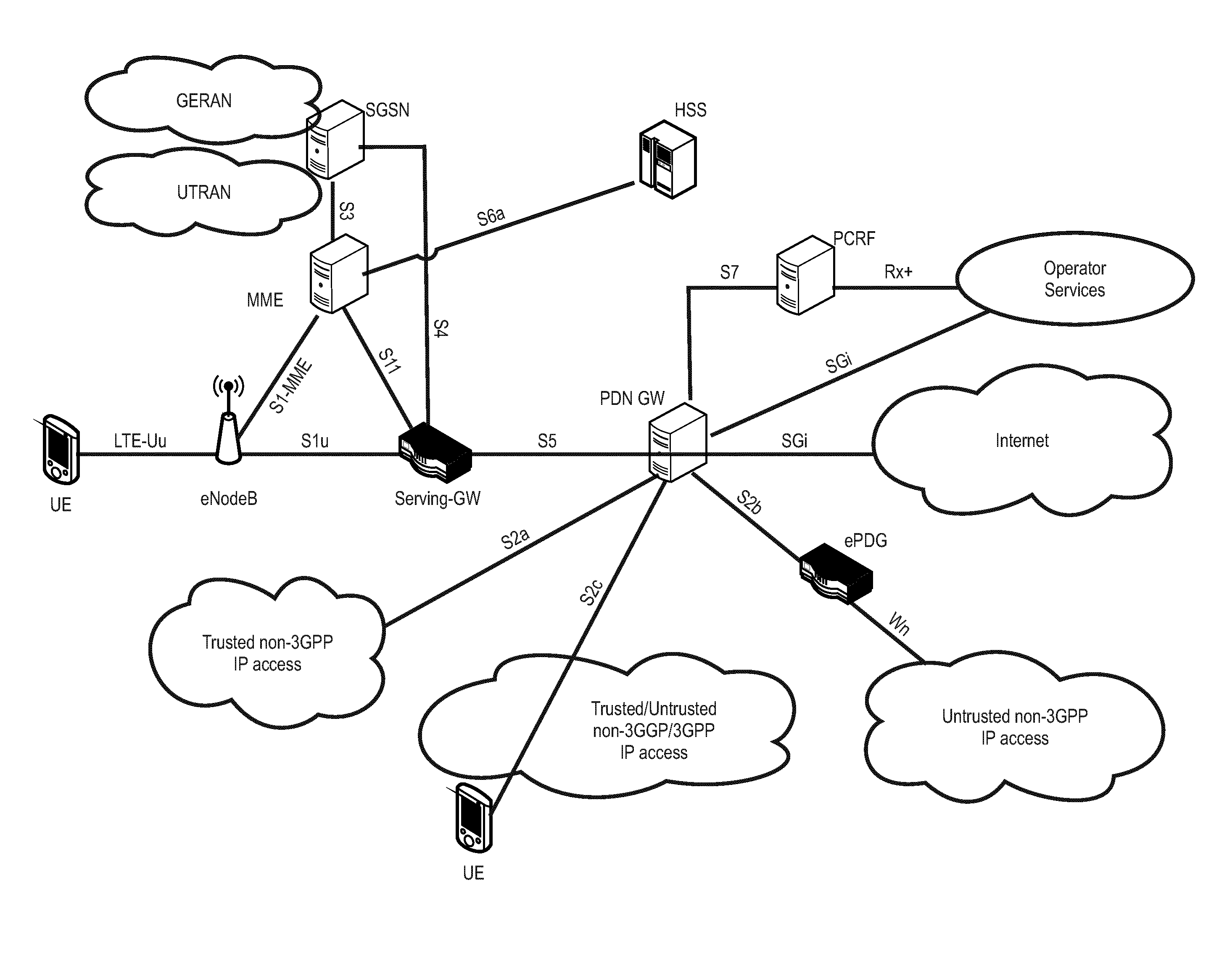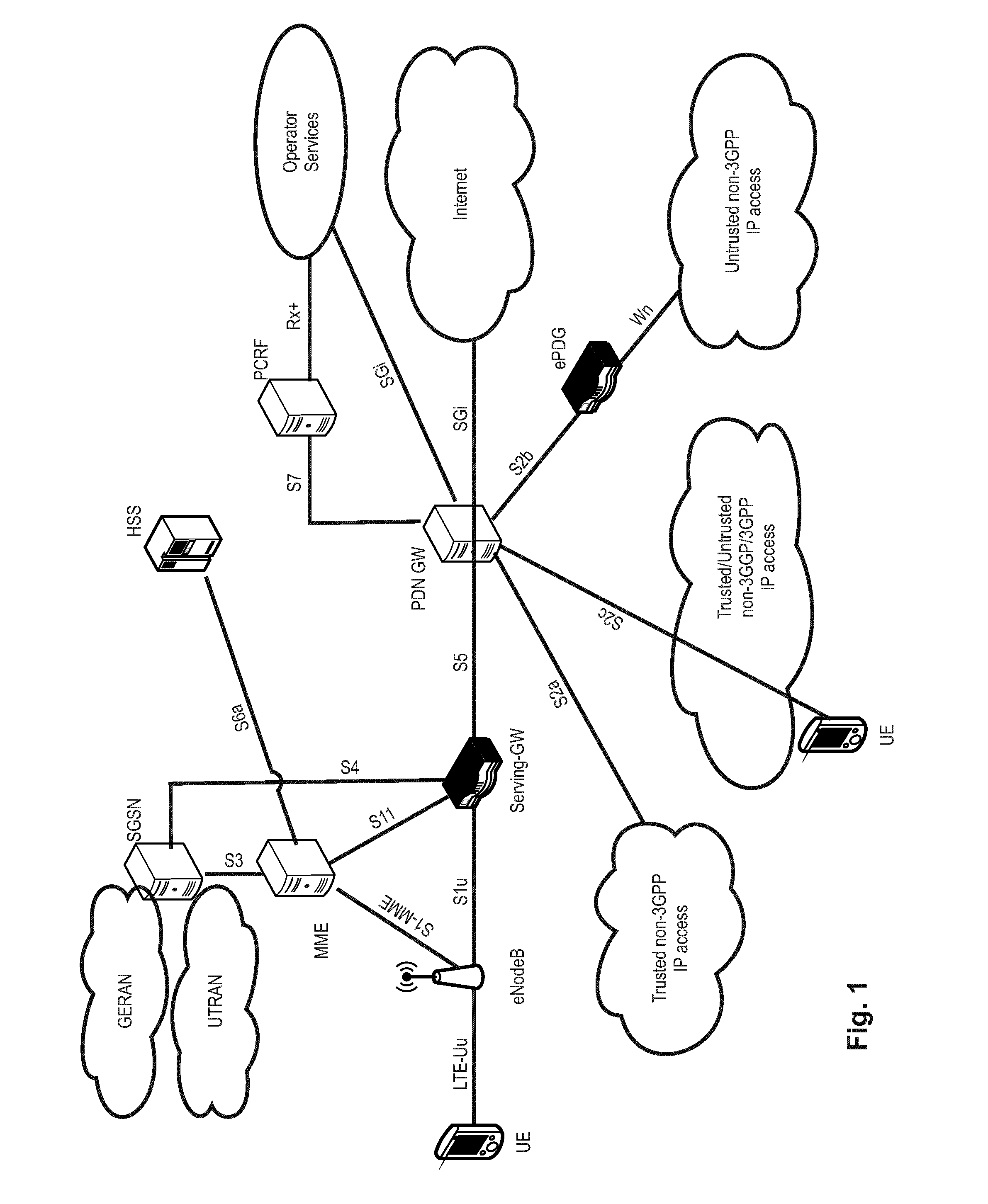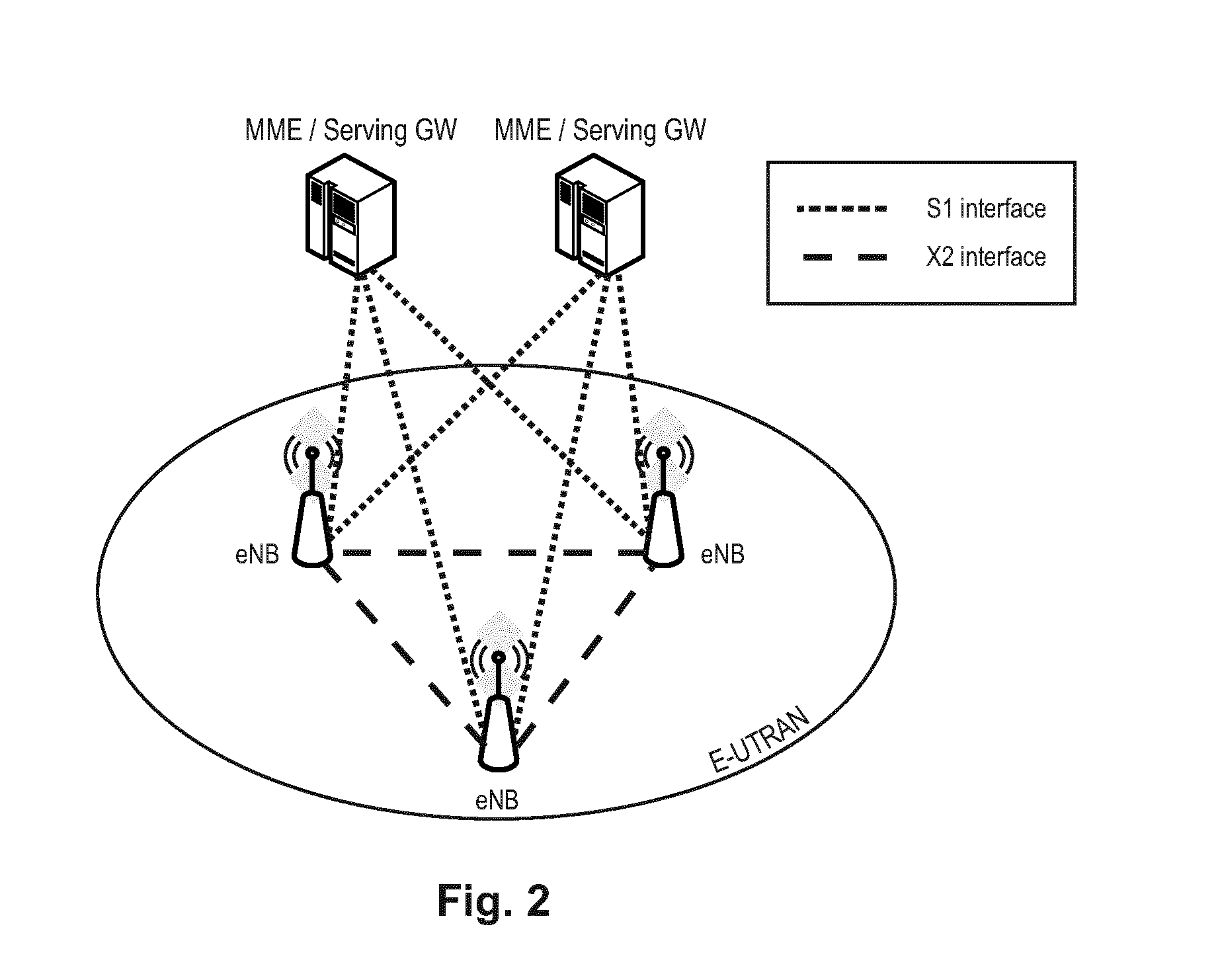Efficient discard mechanism in small cell deployment
- Summary
- Abstract
- Description
- Claims
- Application Information
AI Technical Summary
Benefits of technology
Problems solved by technology
Method used
Image
Examples
first embodiment
[0210]In the following a first set of embodiments will be explained. To simplify the illustration of the principles of the first embodiment, several assumptions are made; however, it should be noted that these assumptions should not be interpreted as limiting the scope of the present application, as broadly defined by the claims.
[0211]The first embodiment will be described with reference to FIG. 24, which is a flow diagram illustrating various steps as performed for a particular first embodiment. A dual connectivity scenario in a small cell environment is assumed, where the UE is connected to both the MeNB and the SeNB, and at least receives data that is forwarded from the SGW to the MeNB, and finally via the SeNB to the UE, i.e. illustrated exemplary in FIG. 21b, 21c as EPS bearer #2. As indicated, EPS bearer #2 can either be split in the MeNB such that the bearer can be transmitted via both eNBs as needed (FIG. 21c) or is not split in the MeNB but separately forwarded from EPS bea...
second embodiment
[0265]The second embodiment deals with the same problem as the first embodiment, however provides a somewhat different and alternative solution as will be explained in connection with FIG. 28. Basically the same assumptions are made as in connection with the first embodiment explained above. In particular, a dual connectivity scenario in a small cell environment is assumed, where the UE is connected to both the MeNB and the SeNB, and at least receives data that is forwarded from the SGW to the MeNB, and finally via the SeNB to the UE, i.e. illustrated exemplary in FIG. 21b, 21c as EPS bearer #2. As indicated, EPS bearer #2 can either be split in the MeNB such that the bearer can be transmitted via both eNBs as needed (FIG. 21c) or is not split in the MeNB but separately forwarded from EPS bearer #1 (FIG. 21b).
[0266]According to the small cell discussion in 3GPP, different user plane architectures have been under discussion as explained in the background section with reference to FIG...
third embodiment
[0275]The third embodiment deals with an improvement to the UE processing, and thus can be implemented independently from or additionally to the first and second embodiments.
[0276]Typically, the SeNB link will have higher latency since the packet sent from the UE to the SeNB will have to go to the MeNB via the X2 interface, thus undergoing at least the backhaul link latency. This does apply less to the dual connectivity mode of FIG. 21b where the different bearers are served by different eNBs; but in the dual connectivity mode of FIG. 21c, the same bearer #2 is served by both eNBs, such that some packets of the bearer are sent via the MeNB and other via the SeNB in the uplink and downlink. The decision as to via which route the packet shall be sent, can for example depend on the real time load, radio situation etc.
[0277]According to the third embodiment, the decision by the UE as to whether to transmit a PDCP PDU directly to the MeNB or to transmit the packet to the SeNB (so as to b...
PUM
 Login to View More
Login to View More Abstract
Description
Claims
Application Information
 Login to View More
Login to View More - R&D
- Intellectual Property
- Life Sciences
- Materials
- Tech Scout
- Unparalleled Data Quality
- Higher Quality Content
- 60% Fewer Hallucinations
Browse by: Latest US Patents, China's latest patents, Technical Efficacy Thesaurus, Application Domain, Technology Topic, Popular Technical Reports.
© 2025 PatSnap. All rights reserved.Legal|Privacy policy|Modern Slavery Act Transparency Statement|Sitemap|About US| Contact US: help@patsnap.com



